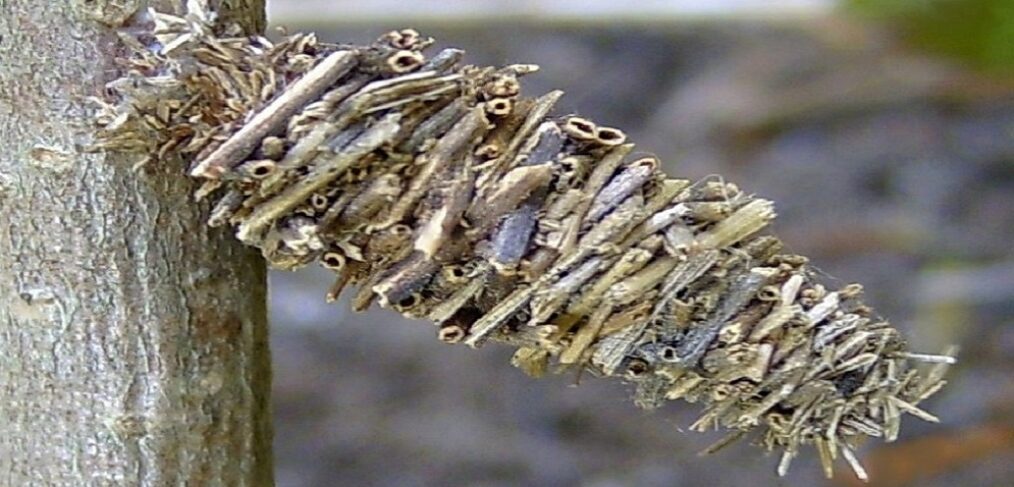
Species of the week #83 – Megalophanes viciella
The bagworm butterfly family are very inconspicuous moths. Their unique technique for developing undisturbed consists of building a silk sack, which is reinforced with different materials depending on the species and habitat. This makes them almost impossible for predators to find and they always have a wind-protected spot.
| Distribution status in Rhineland-Palatinate | Extinct |
| Remaining occurance | Bavaria, Austria,Croatia |
| Last sighting in Rhineland-Palatinate | 1950 near Mechtersheim |
| Habitat | Moor and marsh meadows |
| Threat | Habitat loss |
The Megalophanes viciella is mainly found in fens and marshy meadows. The caterpillars vary in colour from olive to dark reddish, have a blackish brown head and similar breast shields. Their sac is cylindrical and very evenly covered with always transversely arranged, short, grey-brown stalks. The average outer diameter of the sac is about 7 to 9 millimetres and its length 17 to 22 millimetres, tapering slightly towards the end.
During the entire caterpillar stage, the caterpillar remains in its protective cover. It moves along with the sac; moulting and pupation also take place inside it. Only the male adult butterfly leaves the caterpillar sac and seeks out the flightless female to mate. The females live in the silk sac all their lives and only emerge to forage and mate. The males have an extremely short lifespan of only a few hours and their mouthparts are atrophied.
The short lifespan of the males is also characteristic of other species of bagworms. In some bagform species, males no longer appear, so that reproduction is parthenogenetic, i.e. unisexual.
The caterpillars, unlike many other butterfly species, feed on many different plants. Despite this less specialised diet and the possibility of parthenogenetic reproduction, the Megalophanes viciella has become extinct in most areas. Presumably, the reason is habitat loss because many bogs have been drained. This is indicated by growing populations in individual, well managed nature reserves, but it is currently still the subject of research.
Click HERE to learn about more exciting species of the week
Image: By Dumi – Own work, CC BY-SA 3.0, https://commons.wikimedia.org/w/index.php?curid=8555345
